Value Midrange Common Components
While AMD and Intel architectures differ in sockets and sometimes memory configurations, there is more that is the same in the two systems than there is that is different. For that reason the Intel and AMD Value Midrange Systems share a number of common components.
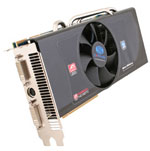 |
For video card best value we have paired the Sapphire Radeon HD 4870 1GB with both the Intel and AMD systems. As pointed out in the recent Holiday 2008 GPU Guide, the 4870 1GB is the minimum card we use internally for gaming comparisons. The Sapphire was our guide choice, but $230 seems the going rate for the 4870 1GB these days. It is available from MSI, Diamond, ASUS, HIS, Power Color, and others so you can shop for the best buy.
On the Intel system, the Gigabyte GA-EP45-UD3P motherboard provides a second PCI x16 slot. Video performance can be improved even further by adding a second Radeon HD 4870 1GB in CrossFire mode. You can also start with two 4870 512MB video cards that are now available for as little as $180 each from Power Color. This will provide 4870 CrossFire for a video card cost for both cards of just $360 total. The motherboard choice for AMD is the Foxconn A79A-S, which also provides multiple x16 slots for CrossFire. The same video options apply to the AMD Value Midrange system.
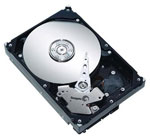 |
Hard drive capacity continues to grow, as you can see in our selection of the Seagate Barracuda 1TB drive (1000GB). While the Seagate 1.5TB drive was plagued with problems at its release, the performance and reliability of the 1TB Seagate has been excellent in our testing so far. For a price of around $100 the value is incredible. While there are differences between hard drives, outside of running benchmarks most people aren't likely to notice the difference in performance between Western Digital, Seagate, Samsung, Hitachi, and other major brands. All are worthy of consideration if the price per gigabyte (or terabyte) is right.
 |
We feel the optical drive for a best value midrange system needs to play Blu-Ray disks. The flexible LG GGC-H20LK has the ability to read both Blu-Ray and HD format disks. It also can burn DVDs at 16x speed in single or dual-layer formats. It cannot, however, burn 25GB/50GB Blu-Ray disks; adding that capability raises the cost to around $200 to $250. BD burners like the $200 LITE-ON 4X BD-R 12X DVD+R 4X Blu-ray DVD-ROM or the $230 LG 6X Blu-Ray Burner GGW-H20LK are good choices.
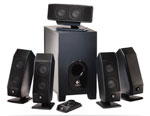 |
Cases are often very personal choices when it comes to features, but the Cooler Master RC-690-KKN1-GP is one of our favorites and it is also very well regarded by our readers. It comes standard with three 120mm fans for excellent cooling and low noise, and the power supply mounts in the bottom of the case. Audio, USB, Firewire, and eSATA ports are on top of the case, which we find an ideal location. The front bays are also ventilated metal mesh for cooling and appearance. If you prefer a more traditional case configuration, the Cooler Master Mystique, also selling for $80, mounts the PSU on top, provides font panel jacks, and is loaded with expansion ports and two 120mm fans.
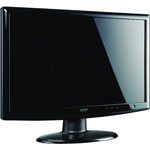 |
The last major component to discuss is the display, and here the tilt was toward best value at full 1080p HD (1920x1080) resolution. The new class of 16:9 21.5" LCD monitors provide true 1080p resolution at the break-through price of just $199. That stellar value shows just how far LCD technology has progressed. If your budget allows, or you just prefer a slightly bigger screen at the same resolution, you can move up to a 24" 16:9 1080p LCD that is selling today for around $300. Alternately, you can downgrade the resolution to 1680x1050 for slightly larger pixels (i.e. more readable text) if you purchase a 22" LCD and save a bit of money.
While the Creative Sound Blaster X-Fi Xtreme Audio is not the best sound card on the market, it is definitely tops in game compatibility. This Creative X-Fi card does a good job with audio, won't break the bank at $50, and it is a great choice for either set of powered speakers. Some would argue that onboard sound is all you need for a $1500 system, and if you are inclined to agree or have a really tight budget, you can save $50 on either the Intel or AMD Value Midrange builds just by using onboard sound.
 |
The Logitech X-540 has been a perennial favorite of users as a reasonably priced but good performing, powered 5.1 computer speaker system. It will certainly not challenge the performance of a separate Dolby amplifier powering audiophile speakers, but it will provide surprisingly good sound for the price.
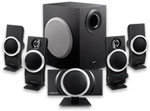 |
The Creative Inspire T6100 76 Watts 5.1 Speaker System is a similar powered speaker system that is selling at Amazon for just $57. The Creative speaker system is our choice in the AMD Value Midrange system, but either speaker system is a good choice for these Value Midrange builds.
Our choice for the top of the midrange is the well-regarded Logitech G51 system. This is mentioned only because the G51 is now just $90 after a $40 rebate, so if you want a better speaker system your net cost for choosing the G51 instead is just $10 more than the Logitech X-540 or $33 more than the Creative Inspire T6100.
 |
These are clearly desktop systems, so the keyboard and optical mouse are the basic Microsoft OEM kit. If you have more specific needs or a favorite gaming mouse you likely know exactly what you prefer. The Microsoft pair is very capable for most. For greatest compatibility, we have chosen Microsoft Vista Home Premium OEM as the Operating System. Unless you have specific networking and special enterprise security needs there is no real reason to pay the extra for Vista Ultimate. We personally recommend the 64-bit version now, but a select few applications still need a 32-bit OS (i.e. Dragon NaturallySpeaking and GameTap to name just two).










77 Comments
View All Comments
7Enigma - Monday, January 12, 2009 - link
I've never heard of this and 20min of searching Anandtech doesn't show it in any CPU cooler roundups that I can find? The Xigmatek AIO or something does show up but clearly this is a different part. Could someone link me to an Anand article that has a review of it?7Enigma - Wednesday, January 14, 2009 - link
Anyone interested see Christof's reply on (now) page 6. Apparently while never written up in an Anand article the cooler was tested in-house and did very well for the $.7Enigma - Wednesday, January 14, 2009 - link
*Mr. Fink was actually the person whom tested the cooler. Edit button, EDIT BUTTON, G-D edit button!7Enigma - Monday, January 12, 2009 - link
$190 E8500$165 E8400
Is there any real benefit to the E8500 over the E8400? I plan on a modest OC, likely not looking to increase the voltage (maybe slightly), is there something I'm missing since the stock frequency seems to be under 200MHz, and the cache size is the same?
Thanks.
Jynx980 - Monday, January 12, 2009 - link
Good guide. I am planning on building a similar system as the Intel Midrange system. I would like to see power draw and acoustic info though. Why are the CPU heatsinks referred to as Rifle coolers?Typo?:the E8600 has been matched with components that are also excellent choices for overclocking.
Jynx980 - Monday, January 12, 2009 - link
I am also curious if CPU and video card prices will get a bit of a shuffle soon with the new Phenom and GTX 295.jasonb - Monday, January 12, 2009 - link
Phenom II is 4x 512 KB, not 4x 512 MB.IHateMyJob2004 - Monday, January 12, 2009 - link
I would love to have someone write up an article (or articles) that revolves around the idea of data storage at home.these days, my concerns are with the following:
1) perosnal finances
2) images (digital cameras are popular these days)
3) videos ($300 for a good digital camcorder)
4) music (all those with iPods step forward)
None of this is processor heavy, but requires alot of disk space. And since alot of important data is on there, backups are also needed.
So, maybe come up with various price points with requirements for backup.
Low end could be simple backup on an external drive.
Mid end could be the same but with more storage
High end could be crazy (raid 0+1?) and include multiple backups.
And some sort of plan for offsite backup (optional) for each build. The high end could use an online service while the low end could just include an extra external hard drive which is kept at another location.
System builds like this do not exist and I want it and I'm sure alot of us ex-gamers (now 30+ year old parents) have much different concerns than the college crowd.
garydale - Monday, January 12, 2009 - link
OK, I can appreciate that a lot of people are looking for game machines, but there are also those of us who are looking for machines to do office work, touch up pictures, and edit home videos. Moreover, if you're not stuck on Windows, you can try other things that can give you a nice performance boost.None of the machines here use what I consider to be all but obligatory nowadays - a RAID array. Of course, using Linux makes setting up a nice 3-disk or 4-disk RAID5 array easy and cheap. And it really boosts your read performance, something even gamers can appreciate. Since HD access is a real bottleneck, going for a RAID array makes sense.
Secondly, how about going to a real 64bit operating system? Even the 64bit Vista usually has you running 32bit programs. With Linux however you get 64bit right the way through without having to worry about driver or program compatibility (I'm running Debian/Lenny on my workstation which, although still in "testing", is far more stable than the antique XP, let alone Vista).
Admittedly, 64bits doesn't always buy you a lot of extra performance, but in the real world, it's a free upgrade. And sometimes it can get you a big payback while it rarely costs you any performance.
Anyway, I consider my system to be midrange but it costs less than the lower cutoff point, with the 3 HDs, quad-core processor and (if I needed a new one) display being the only expensive parts. Since I'm not a gamer, I didn't bother with a video card. The onboard video handles full-screen HD video nicely so why bother? This also allows me to use the wonderfully economical and quiet PC Power & Cooling Silencer 370 power supply.
Another cost savings is to use a KVM switch instead of a monitor. Some people are connecting multiple monitors up to a single computer, so obviously this isn't a general solution, but with Linux providing multiple virtual desktops, I find that a single monitor for multiple machines works well. And certainly a reasonable KVM saves money and desk space over multiple keyboard, mouses and monitors.
7Enigma - Monday, January 12, 2009 - link
Mr. Fink,Can you recommend a good PSU in the 500-550w range? I've been waiting for the 2nd part of the PSU reviews that have that range as I feel the 750w is overkill for my single gpu build. Maybe send Mr. Katzer an email since he did the 350-400 article?